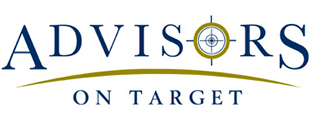- Know your business’ balance sheet thoroughly. This may sound obvious, but, as your accountant can confirm, many business people don’t know how cash flow works and its significance to keeping their operation afloat. Many owners focus on their business’ profit and loss statement alone. It’s a potentially fatal mistake because healthy profits can mask an impending cash flow crisis. Profit and loss statements don’t usually contain the information required to make an adequate cash flow projection. For that, you’re going to need a structured balance sheet that includes all the influencing factors including debts, interest payments, inventory and so on. This is the basis for your cash flow projection which represents an “educated guess” at the likely inflows and outflows over the period of time you have selected to map out.
- Set up a cash flow budget. You need to focus on forward planning to generate a “best guess” about likely future sales and expenses. There are some cash flow software tools around, but you can also set up your own program in Excel. You can also ask us for help. We have financial monitoring tools to help you stay on top of your numbers.
- Review and update cash flow budgets regularly. It’s your best insurance against potential cash shortages. If your business has a predictable cash flow, then cash flow budgeting on a quarterly basis is often enough. If you’re already visiting your accountant for other tax related matters, then you can get a cash flow budget prepared at the same time. The rule of thumb is that the greater the cash flow uncertainty a business faces, the more often a new cash flow budget should be prepared.
If cash is really tight, you might need to move to weekly projections, and decide which invoices you’ll pay and whom you need to get payment from as soon as possible. Watch bank balances and make sure you don’t have checks sitting on a desk waiting to be deposited. This can be time consuming, but you won’t be the first business that has had to do that from time to time.
Rapid growth sounds good but, ironically, too much of this good thing can bring on a cash crunch – which takes many business owners by surprise. A sudden spurt in sales is often accompanied by depletion in inventory or an increase in receivables that is not being monitored for overdue collections. Strong sales one month often means a cash shortage next month. By monitoring the business’ cash status you can arrange credit from suppliers and banks to cover the temporary shortfalls. However, these arrangements take time to set up so you need to be prepared in advance. - Set your credit terms carefully. If the nature of your business requires offering credit, then it is important to set clear limits to your terms of credit.
- Get payments in quickly. Master the art of receivable management. Let customers know how much time remains before due dates. Stay in close touch with major debtors as payment deadlines approach. Offer small discounts for early payment as an incentive.
- Pay your creditors strategically. Take advantage of credit terms and prioritize payments according to the consequences involved in going overdue. Wages, taxes and direct debits are at the top of the list for on-time payment; key suppliers may be prepared to wait a while to keep your business. Don’t pay early just to get a discounted price unless getting the discount is better than being without the cash.
- Plan for the ups and downs. Be aware of when lean cash flow periods are coming up and plan accordingly. Avoid funding major purchases from your business’ working capital unless you are sure you have the cash to cover it.
- Get finance products working to your benefit. Overdrafts, premium funding, lease facilities and cash flow funding products can all be excellent tools to help match a business’ cash supply with planned outlays. Even the business credit card can be a good way to ease the squeeze as long as you are sure the debt can be paid before interest kicks in.
- Don’t incur tax and other statutory penalties. Save yourself the money and the stress!
- Keep your hands out of the till. Make cash drawings for personal purposes according to conservative cash flow forecasts.
Information in this article is sourced from RAN ONE © 2010 Bullseye




